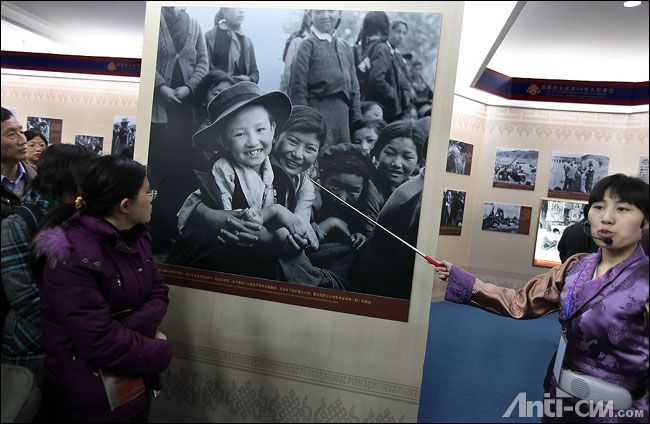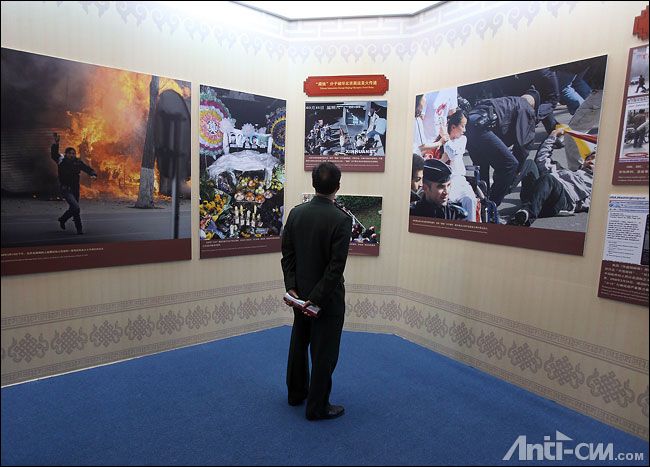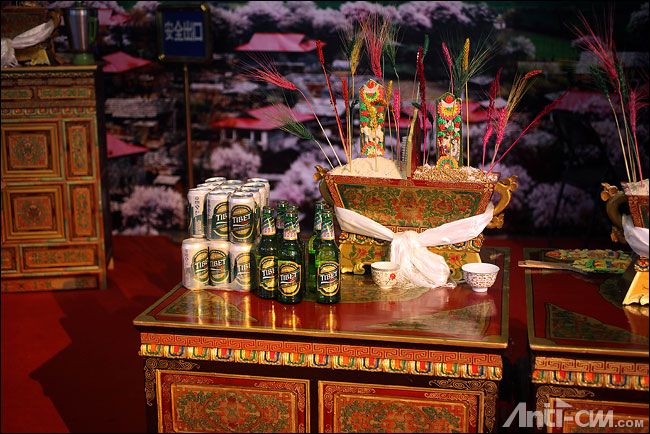|
|
Tibet Atrocities Dot Official China History
http://www.nytimes.com/2009/03/13/world/asia/13exhibit.html?_r=1
BEIJING — Gone from Tibet are the shackled slaves, the thumbscrews and the scorpion pits that awaited serfs who defied their masters. Gone, too, is the Dalai Lama, that “jackal clad in Buddhist monk’s robes,” who fled to India 50 years ago this week during an uprising that China claims was aimed at preserving his feudalistic rule.
With Tibet closed to foreign journalists and much of the region suddenly, and mysteriously, troubled by patchy phone and Internet service, the only way to get a glimpse of contemporary Tibet these days is by visiting the Cultural Palace of Nationalities, a socialist-style confection whose current exhibition, “50th Anniversary of Democratic Reforms in Tibet,” is getting rave reviews from the soldiers, schoolchildren and government officials who are bused in day after day.
With its display cases of gruesome torture devices, grainy film scenes of mutilated faces and the “liberation” shots of beaming Tibetans, the exhibit is a propagandist tour de force that reinforces the Communist Party’s unbending version of history during what is referred to here as a “sensitive time.”
In addition to marking the five decades since Tibet was “unshackled from despotic theocratic rule,” Saturday is the first anniversary of the riots in Lhasa that left 19 people dead and prompted a heavy-handed government response, one that has intensified in recent weeks in areas with large Tibetan populations.
The unrest last March came as a shock to the authorities, who thought decades of generous investment in Tibet had gone a long way to mollify lingering resentment toward Beijing.
The exhibit, which opened last month, seeks to smother the contention held by many overseas scholars that Tibet enjoyed brief periods of independence, and it lays out in breathless detail the positive transformation wrought by Chinese rule. “After the democratic reforms, serfs and slaves were free to build a happy new life, and they showed great enthusiasm in production,” announces one of the cheery ethnic Han docents, dressed in silken Tibetan robes, who guide visitors from start to finish.
The exhibit also tries to drive home the government’s long-held claim that the Dalai Lama is stoking separatist sentiment among an otherwise contented populace. “The Restoration Fantasy of the Dalai Clique” is how one panel introduces evidence purporting to show that the Dalai Lama, backed by foreign powers and Western journalists, is seeking a return to power and to tear China apart.
“History makes fair judgments,” reads the text of the sprawling exhibit whose emotional peak is a life-size diorama of gleeful Tibetans tossing feudal documents into a bonfire. “During 50 years of development, Tibet has moved from darkness to light, poverty to affluence, dictatorship to democracy, and seclusion to opening up.”
Western scholars dispute the government’s interpretation of history, and Tibetan exile groups view the Communist Party as an oppressive occupier, but such contrarian sentiments rarely reach average Chinese, most of whom have long since absorbed the official version promulgated in textbooks, on television and in newspapers.
As he left the exhibit on Tuesday, Dai Zhirong, an electronics salesman from Tianjin, said what he saw only reaffirmed his disgust for the Dalai Lama and his disappointment with the Tibetan people. “I don’t understand how they can eat our food and still hate us,” said Mr. Dai, 57, who stopped by after seeing a promotional segment on television. “When I am reminded of the truth, and see what the separatists are trying to do, I hate them, too.”

At an exhibition in Beijing recently, a tour guide explained how Chinese educational reforms had helped Tibetan children.

The exhibition depicted a signing ceremony between representatives of the Chinese and Tibetan governments.

Also shown were photos from last year’s riots in Lhasa and the carrying of the Olympic torch to the Summer Games in Beijing

Tibet beer in a display of a Tibetan house. Tibet, the exhibition held, had been “unshackled from despotic theocratic rule.” |
Atrocities, Dot, history, official, Tibet, Atrocities, Dot, history, official, Tibet, Atrocities, Dot, history, official, Tibet
|